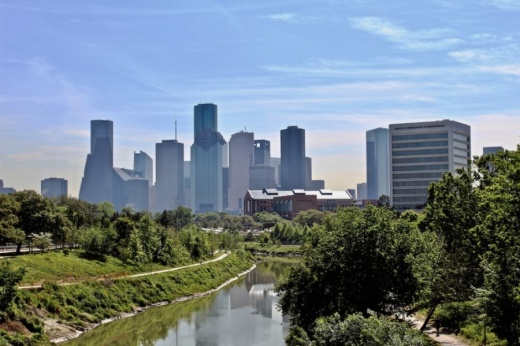With April being the first full month with stay-at-home orders in place, the Greater Houston area saw its unemployment rate rise to an all time high of 14.2%, according to data from Workforce Solutions.
Parker Harvey, principal economist at Workforce Solutions, said April’s unemployment rate increased by around 9 percentage points since March, with around 312,000 jobs lost in April. This brings the total number of unemployed individuals in the Greater Houston area up more than 450,000. The previous high for the Greater Houston area's unemployment rate was set in January 2010 at 8.7%.
“There is nothing even remotely close to it," Harvey said. "Even during the depths of the Great Recession, our unemployment rate never broke 9%, so we have surpassed that and then some at this point.”
The local unemployment rate surpassed that of the state by 1.2%; however, the rate remains lower than the national unemployment rate by 0.2%. Harvey said this is due to the Greater Houston area's dependence on the oil industry.
“Oil prices are painfully low, and that probably is what’s factoring to the fact that [the Greater Houston area's] unemployment rate is higher than the state average,” he said.
According to Workforce Solutions data, the hardest hit industries in terms of job losses include leisure and hospitality, education and health services and trade, transportation and utilities. Leisure and hospitality, which includes restaurants, bars and hotels, saw the biggest drop in unemployment with 117,000 jobs lost—a 35% decrease.
Historically, Harvey said the leisure and hospitality industry add about 2,200 jobs each year in the month of April. However, this year the industry experienced its largest one-month decline since records began in 1990.
Similarly, education and health services saw its biggest one-month decline with the loss of 50,000 jobs from March to April.
Harvey said while many people believe the health care sector is safe from layoffs as the world is in the middle of a public health pandemic, that is not necessarily the case.
“Most health care services tend to be more elective in nature than emergency [and] people are deferring their routine physicals or teeth cleanings,” he said. “A lot of workers in that space have either been furloughed or laid off.”
On the other hand, some sectors of retail that were allowed to remain open during the economic shutdown have stayed resilient, and in some cases even adding jobs, Harvey said. These essential businesses include grocery stores, home improvement stores and garden centers.
“Those did exceptionally well over the last month, adding 2,000 jobs, which is the best April that segment of retail has ever had,” he said
Harvey said the job market picture will be different in the future as businesses close permanently and some people will not be able to be rehired post-pandemic.
“Unfortunately, that is a reality that will come out of this," he said. "[Some businesses] may not be able to come back, they may not be able to bring those workers back."
The Greater Houston area's unemployment rate could further increase to as high as 17% in the coming months, Harvey added. However, the rate increase itself would still not be as severe as it was from March to April.
“However, our unemployment rate is a lagging indicator, things are so fluid and evolving quickly,” he said. “The picture of what is really going on by the time we get May job numbers could be completely different.”
The high unemployment rate caused by the ongoing COVID-19 crisis put an end to the Greater Houston area's 38 consecutive months of growth, according to the Workforce Solutions data.
“[This unemployment spike] will certainly put us on a different trajectory than it would have been otherwise,” Harvey said. “The question really becomes: 'How deep is this? How severe is it? And how long [will] it lasts?'”




